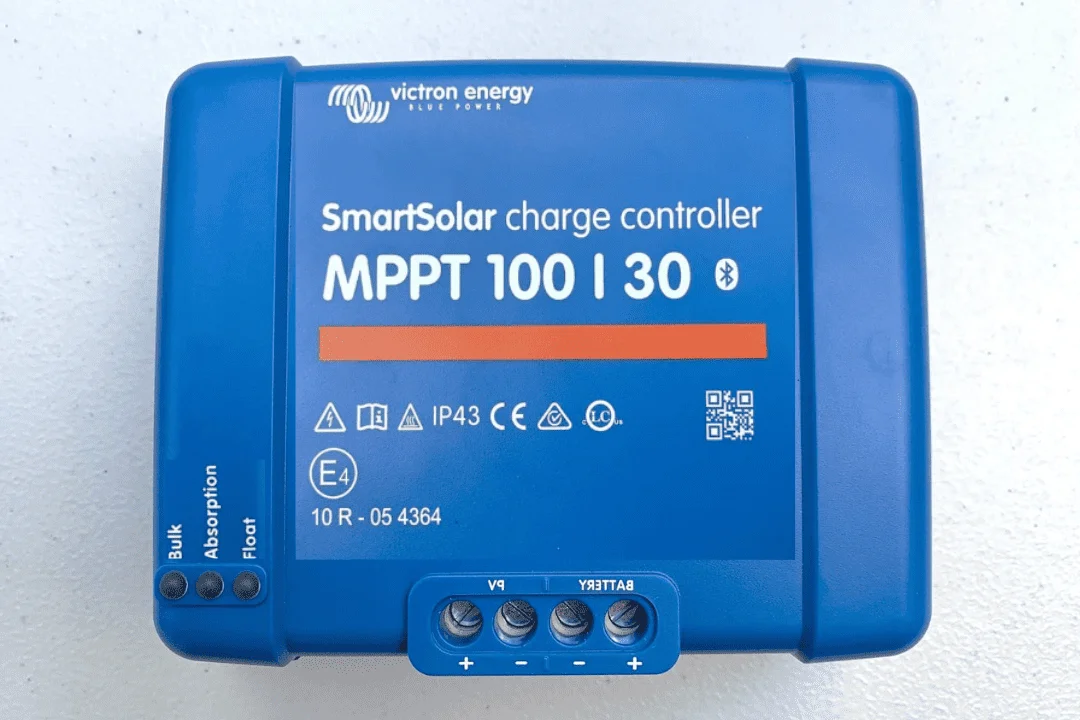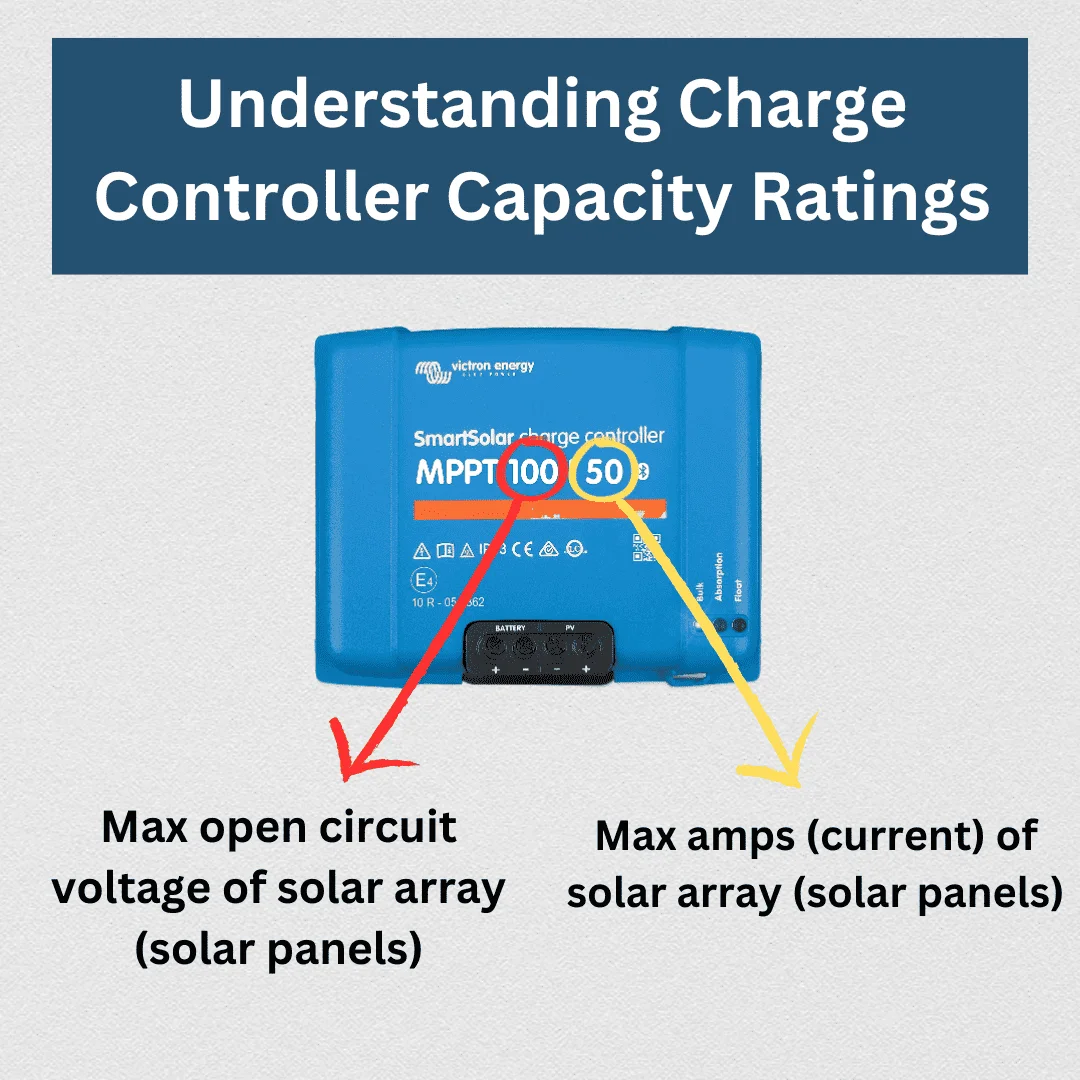
In this article, we will explore how many watts a 50 amp charge controller can handle (with an example), what does voltage and amps mean on a charge controller, and what size solar panel system you can connect with it.
what does a 50 amp charge controller mean?
A 50 amp charge controller refers to the maximum current capacity it can handle. This rating indicates that the charge controller is designed to handle up to 50 amps of current flowing from the solar panels to the batteries.
However, calculating the maximum wattage capacity limit of a 50A charge controller makes it easy to determine the size of the solar panel system that can be connected to it.
How Many Watts Can a 50 Amp Charge Controller Handle?
A 50 amp charge controller can handle 725 watts of solar input when charging a 12v battery, 1450 watts when charging a 24-volt battery, and 2900 watts when charging a 48V battery.
Now let's discuss how to find out the maximum size of the solar panel system (watts) you should connect with a 50 amp charge controller.
Note: For more accurate information, check out the user manual guide of your charge controller. Click here or scroll down to find out how to read the numbers.
Max solar array size for 50A charge controller?
Multiplying the max voltage capacity and amps rating of your charge controller is NOT the way to measure the max solar panel system you can connect. Instead, it will depend on the voltage of your battery bank.
For a 12V battery, multiply the amps by 14.6. For a 24V battery system, multiply the amps by 28.8. And for a 48V battery system, multiply the amps by 57.6.
Let's assume you have a 12v battery system and the Victron 50 amp charge controller.
50 x 14.6 = 725 watts
Here is a table illustrating the solar panel system sizes you can connect with a 50A charge controller to charge a 12V or 24V battery:
| Battery voltage | Max solar panel system size (watts) |
|---|---|
| 12V | 725 watts |
| 24V | 1450 watts |
Or have a look at the user manual for the most accurate number.

As a safety precaution, it is recommended to use 80% of the rated capacity of your charge controller.
Following this guideline, I suggest the following maximum PV input (solar panel system) sizes when using a 50A charge controller to charge different battery voltages:
- For a 12V battery: Use a maximum of 600 watts PV input.
- For a 24V battery: Use a maximum of 1200 watts PV input.
- For a 48V battery: Use a maximum of 2400 watts PV input.
By following this approach, you will ensure the protection of your solar system in case of any solar panel output fluctuation.
A good example would be the cloud edge effect, where a solar panel can generate up to 20% more power than its rated wattage capacity as a result of the increased DC voltage.
Note: Check the specifications of your charge controller to confirm if it supports 24V and 48V battery systems. If it doesn't, you will be limited to using a 12V battery. However, most 50A charge controllers should be able to handle both 12V and 24V battery systems
50 amp charge controller --- Calculating watts Handling Capacity
To find out the watts capacity limit of your 50 amp charge controller --- multiply the charge controller amp rating (50A) by 14.5 when charging a 12v battery, by 29.2 when charging a 24v battery, and by 58.4 when charging a 48V battery.
Because the charging DC voltage requirement for a battery will increase as the battery gets charged up.
Note: Some charge controllers will limit their output to 13.4 volts when charging a 12v battery and 26.8 volts when charging a 24v battery. I would suggest checking out the manual guide of your charge controller for more accurate information.
Example #1: 12v lithium battery voltage chart

Example #2: 12v lead acid battery voltage chart

Now multiply the charge controller amps rating by the battery's max charging voltage. For instant, a 12v lithium battery will require 14.5 volts to charge when in the floating stage (after 80% charged).
Formula: Maximum Power handling (in Watts) = Charge Controller Amp Rating x Battery float charging voltage
For Example: Let's consider an 80% charged 12-volt battery bank connected to a 50 amp charge controller.
Maximum Power = 50 amps x 14.5 volts = 725 watts
Therefore, a 50 amp charge controller connected to a 12-volt battery bank can handle a maximum of 725 watts.
Read the user manual for the most accurate numbers
I'm guessing you're new to this and finding the details on the charge controller a bit overwhelming. Don't worry, I understand how confusing it can be, especially for beginners. Let me break it down for you in a simpler way so it's easier to grasp.
Let's take the Victron 50A MPPT charge controller as an example:

- 100 number indicates that it can handle the solar array's maximum open circuit voltage of up to 100 volts. You'll find the open circuit voltage (Voc) of your solar panel on the panel's backside specs sheet. If you have multiple solar panels connected together in series or parallel, the total Voc should not exceed 100 volts.
- 50 number indicated that it can pass up to 50 amps to charge your battery.
Role of a solar charge controller: To charge a 12v battery, if your system is producing 100 volts, a charge controller will reduce the voltage between 12-14 volts (depending on the battery's state of charge) to safely charge the battery.
MPPT vs PWM working mechanism: In this scenario, an MPPT charge controller will increase the amps to cover up the losses but a PWM charge controller won't. This will cause a huge loss if you're using a PWM charge controller.
Tips for Choosing the Right Charge Controller
- Consider the voltage of your battery bank and match it with the charge controller. Ensure that the charge controller is compatible with the battery bank's voltage.
- Take into account the charging efficiency of the charge controller. Look for models with higher efficiency ratings, as they can handle more wattage without wasting energy and generating excess heat. Usually, MPPT charge controllers are 20% more efficient than PWM charge controllers.
- Assess the panel voltage and current ratings. Ensure that the charge controller can handle the voltage and current output of your solar panels to optimize power transfer and avoid any potential overload.
- Pay attention to temperature specifications. If you are installing the charge controller in a location with high temperatures, choose a model that can withstand and operate efficiently under such conditions.
- Consider your DC load consumption requirements if you planning to run it directly from the charge controller.
FAQs
Using a higher amp charge controller than necessary is generally acceptable. However, it is essential to ensure that the voltage ratings and other specifications match your battery bank and solar panels.
Exceeding the power handling capacity of a charge controller can result in overheating, reduced efficiency, and potential damage to the charge controller and other components in your solar power system.
Yes, it is possible to connect multiple charge controllers in parallel to increase the power handling capacity. However, proper synchronization and coordination between the charge controllers are crucial to ensure efficient charging.


